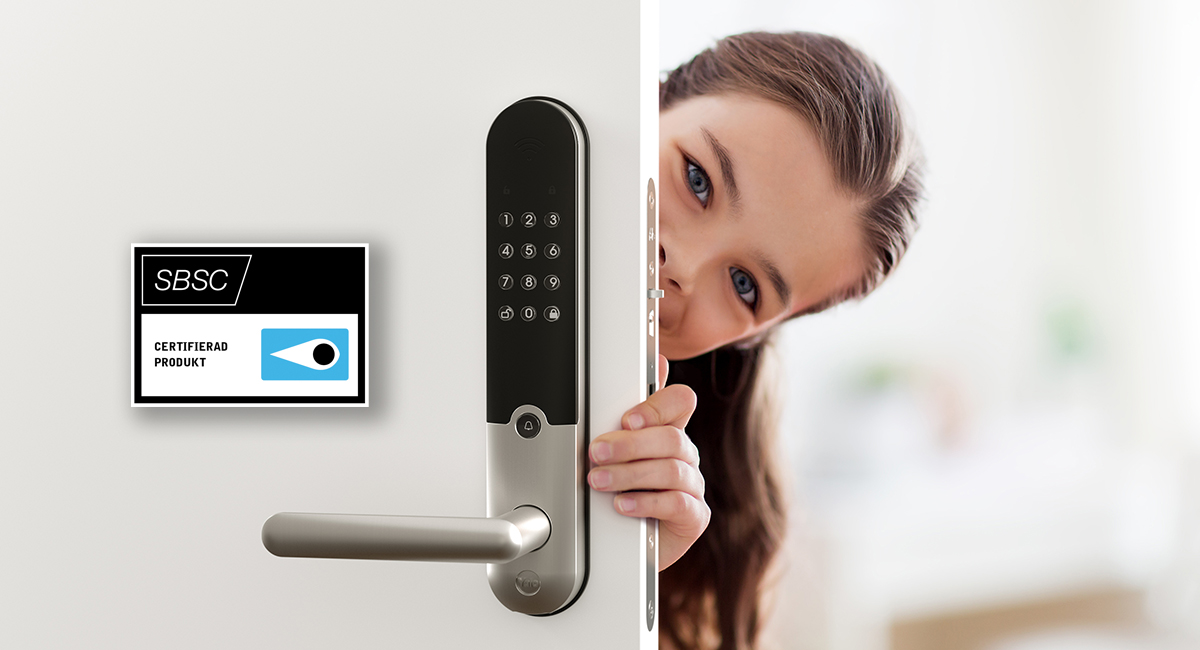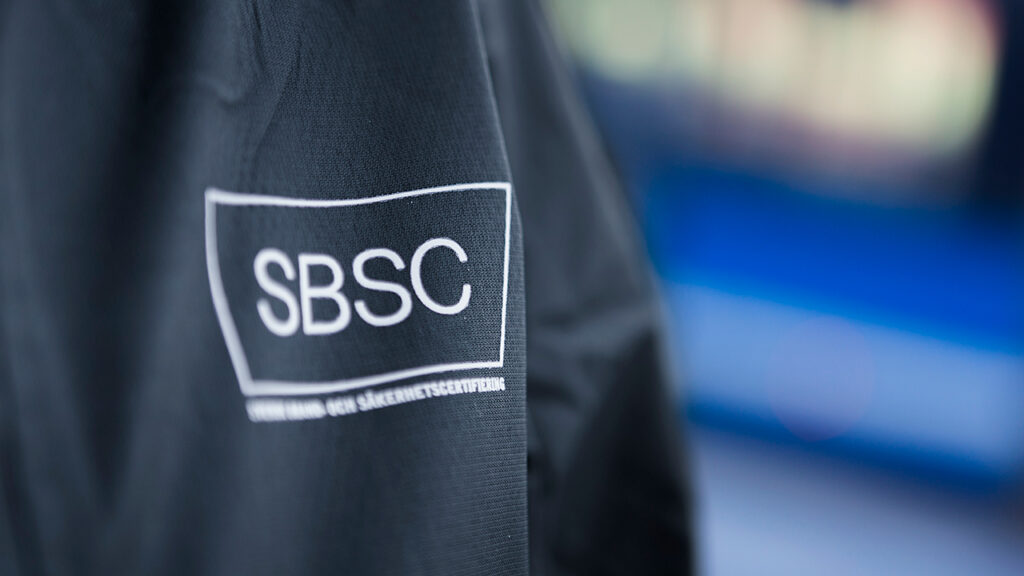
Assa Abloy’s well known Yale Doorman lock was the first to become certified in accordance with the new standard, SSF 3523 Digital Locking Units. We met with Magnus Eriksson and Håkan Hedlund from Assa Abloy which manufactures Yale Doorman, and with Mats Moberg and Inge Lidén, standards and norms of managers at SSF, the Swedish Theft Prevention Association, who were both involved in producing the new standard, to discuss digital locks, security and testing.
Mats Morberg and Inge Lidén, standards and norms managers at SSF, explained that the background of the new standard was quite simply that there had been an increase in demand for digital locking units on the Swedish market, but there were no rules or regulations which regulated how data files, transfers, storage, etc., were to be handled in a secure way.
”In Sweden, we have worked with the SSF 3522 Approved Locking Units standard for many years and successfully so. And it is widely known – even amongst “laypersons” – that locks must be certified and approved. When digital locking units became more commonplace, we also saw a need for a specific standard for this type of lock as well,” explains Mats Moberg who was involved in the development of the SSF 3523 standard.
Magnus Eriksson, production manager at Yale Doorman agrees that the demand for digital locks is substantial.
” Scandinavia, particularly Sweden and Norway, are truly at the cutting edge of digital locking units,” explains Magnus.
Why is this the case?
”I believe there are two reasons why we have come as far as we have: on the one hand, it is due to the fact that we are generally curious and open to new technologies and, on the other, the fact that we have long had a well defined standard for locks in Sweden and Norway. Here, it is quite easy to develop a product and get it out onto a broad market. Looking at the rest of Europe, there are a great many different types of doors and the hole patterns are not homogeneous in the same way as here, which makes it a lot harder to reach the market,” explains Magnus Eriksson at Yale.
What would you say are the main reasons why digital locks have become so popular?
”The simplicity of not needing to use keys! In our experience, once you have started using digital locks, you don’t want to go back to using keys. There is also a sense of security in being able to quickly check the app to see if the door is locked or if your children are at home. Also, just being able to provide a code to your handyman, for example, which only works for a certain period of time and which you set up in the app.”
Yale Doorman L3S is now certified according to SSF 3523 – What was the testing process?
”For L3S, we had an external security review which involved an outside company conducting a ”white box review” where they get access to all codes in order to be able to identify weaknesses from the inside. The security company classifies the weaknesses which need to be fixed right away or whether there are better solutions to other challenges,” says Magnus, who explains further.
”One of the good things with the new standard is that it builds on the basic requirements for approved locking units (SSF 3522) with the addition of connecting them to apps and “the cloud”. The basic characteristics of L3S are well tested, and the product has been certified in accordance with SSF 3522 since its introduction. What has been added is a review of the digital characteristics of the lock in order to determine how well the solution as a whole can resist manipulation or hacking,” explains Magnus.
Do your customers have a lot of questions about security?
”No, actually. In Sweden, we are so use to web-based IT solutions that the step from the “analog world” to the digital one is not so big. In Sweden, we also have a long tradition of certifying and recommending certified products which is a quality seal that creates a sense of security.”
Håkan Hedlund, Standard & Compliance Manager, at Assa Abloy adds that the ability to build secure systems can also be found in Europe at large.
”The difference is that, with Yale Doorman, we have a broader base at the consumer level. In Europe at large, it is more about ”high-end products” while we can offer high-performance here in Scandinavia in terms of security for the door to your own home,” explains Håkan, who continues.
“In Sweden, we have a long and established tradition of collaborating on standards and norms for locks and fittings. Because of our active work, we are involved and develop European standards both for mechanical, electromechanical and digital products since we want to be able to offer safe, secure, certified products for all users. Approved locking units are a good example of safe and secure products which, thanks to SSF 3523, are now connected.”
But Scandinavia is not the only place we are at the cutting edge.
”Actually, it was a sister company in South Korea which helped out in developing Yale Doorman,” explains Magnus. “There, you change your lock as often as you change your mobile phone, and they are enormously interested in technical devices. In South Korea, design is on a different level!”
We get the opportunity to see a lock called Gateman by Assa Abloy and note that it is a great deal larger than a Yale Doorman L3S. By googling A330-FH , you can get an idea of what a digital locking unit looks like in Korea.
Peering into the future and at the rapid pace of digitalization, Inge Lidén at SSF hopes that they managed to accommodate this trend in the new standard.
”Given that digitalization is developing so quickly, we wanted to create a standard that did not need to be updated particularly frequently and attempted to form it in a way that was as universal as possible, something we believe – and hope – we have achieved.”
Looking for a certified product?
Here you will find all SBSC-certified products available.


